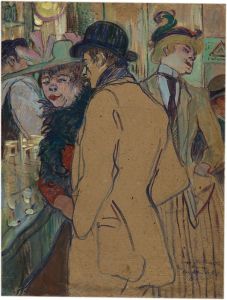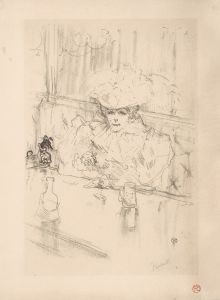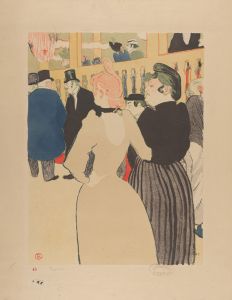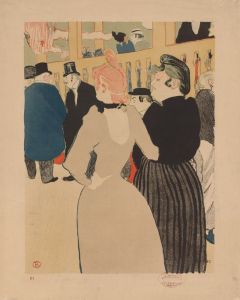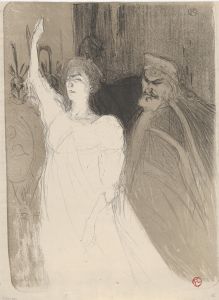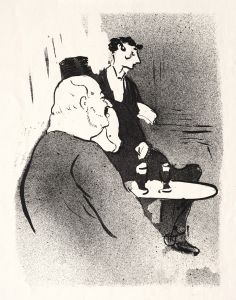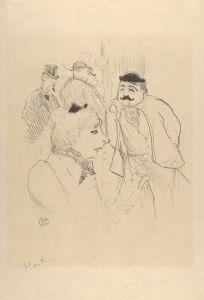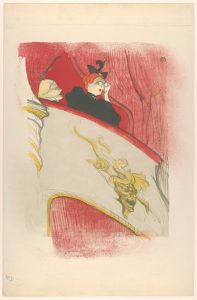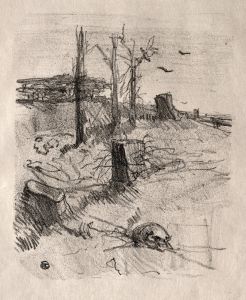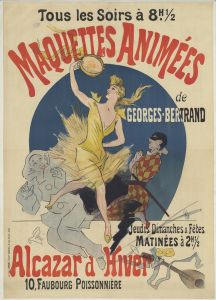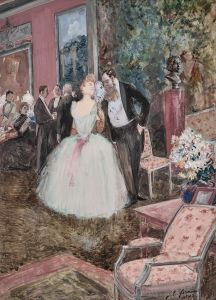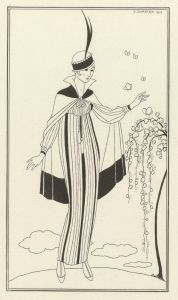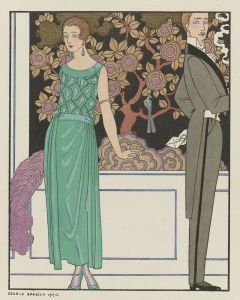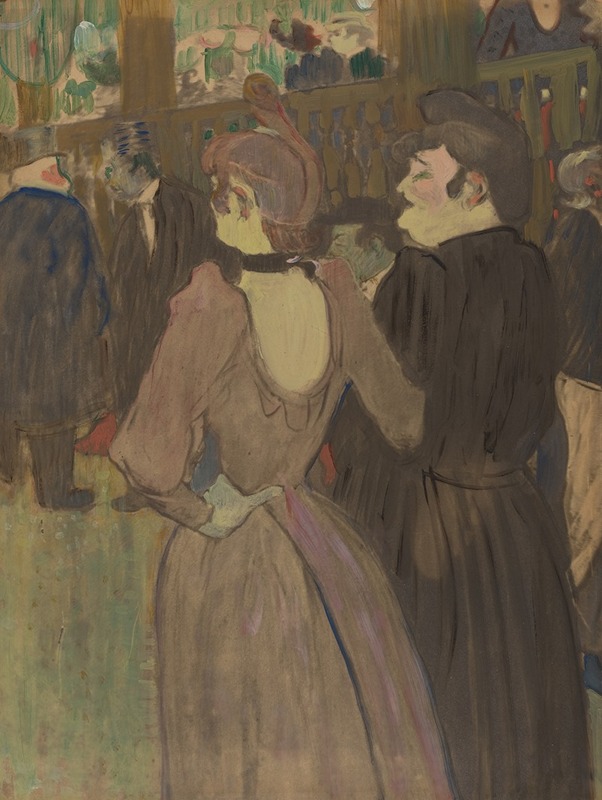
La Goulue And Her Sister
A hand-painted replica of Henri de Toulouse-Lautrec’s masterpiece La Goulue And Her Sister, meticulously crafted by professional artists to capture the true essence of the original. Each piece is created with museum-quality canvas and rare mineral pigments, carefully painted by experienced artists with delicate brushstrokes and rich, layered colors to perfectly recreate the texture of the original artwork. Unlike machine-printed reproductions, this hand-painted version brings the painting to life, infused with the artist’s emotions and skill in every stroke. Whether for personal collection or home decoration, it instantly elevates the artistic atmosphere of any space.
Henri de Toulouse-Lautrec, a prominent French painter and illustrator, is renowned for his depictions of Parisian nightlife in the late 19th century. One of his works, "La Goulue And Her Sister," captures the essence of this vibrant era. Although specific details about this particular painting are scarce, Toulouse-Lautrec's broader body of work provides context for understanding its significance.
Henri de Toulouse-Lautrec was born on November 24, 1864, in Albi, France. He became a central figure in the Post-Impressionist movement, known for his innovative use of color and line. Toulouse-Lautrec's work often focused on the bohemian lifestyle of Montmartre, a district in Paris famous for its cabarets, cafes, and dance halls. Among the many performers he depicted, Louise Weber, known by her stage name "La Goulue," was a frequent subject.
La Goulue, meaning "The Glutton," was a celebrated can-can dancer at the Moulin Rouge, a famous cabaret in Montmartre. Her energetic and flamboyant performances made her a star attraction. Toulouse-Lautrec's fascination with La Goulue is evident in several of his works, where he captures her dynamic presence and the lively atmosphere of the venues where she performed.
"La Goulue And Her Sister" likely features La Goulue alongside her sister, although specific details about the painting's composition and style are not well-documented. Toulouse-Lautrec's portraits typically emphasized the personality and character of his subjects, often using bold outlines and expressive colors. His ability to convey the spirit of the Parisian nightlife and its characters has made his works enduringly popular.
Toulouse-Lautrec's relationship with his subjects was often personal and complex. He was known to socialize with the performers and patrons of the venues he depicted, providing him with an insider's perspective on the vibrant world he portrayed. This close connection allowed him to capture the nuances of his subjects' personalities and the ambiance of their surroundings.
The artist's unique style was influenced by various factors, including his admiration for Japanese prints, which is evident in his use of flat areas of color and strong lines. Additionally, his physical condition—Toulouse-Lautrec suffered from a genetic disorder that affected his growth and mobility—may have contributed to his distinctive perspective and approach to art.
While "La Goulue And Her Sister" may not be as widely recognized as some of Toulouse-Lautrec's other works, it remains a testament to his skill in capturing the essence of his subjects and the cultural milieu of his time. Toulouse-Lautrec's legacy endures through his vivid portrayals of the Parisian nightlife, offering a window into the world of the Moulin Rouge and its colorful characters.
Henri de Toulouse-Lautrec passed away on September 9, 1901, but his influence on the art world continues to be felt. His works are celebrated for their innovative style and their ability to convey the vibrancy and complexity of the human experience. Through paintings like "La Goulue And Her Sister," Toulouse-Lautrec has left an indelible mark on the history of art, capturing the spirit of an era and the personalities that defined it.





